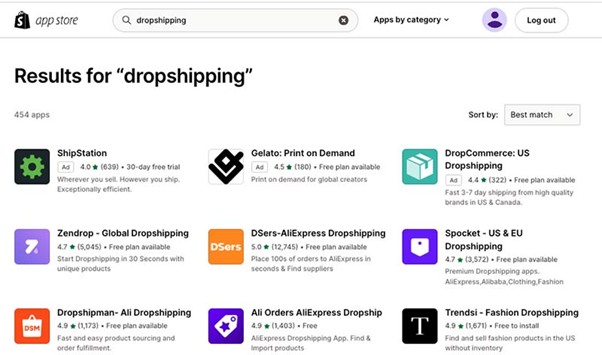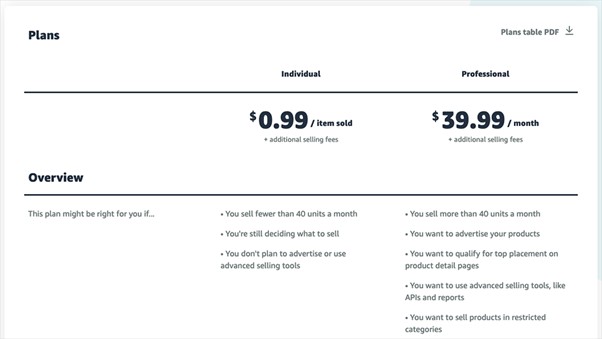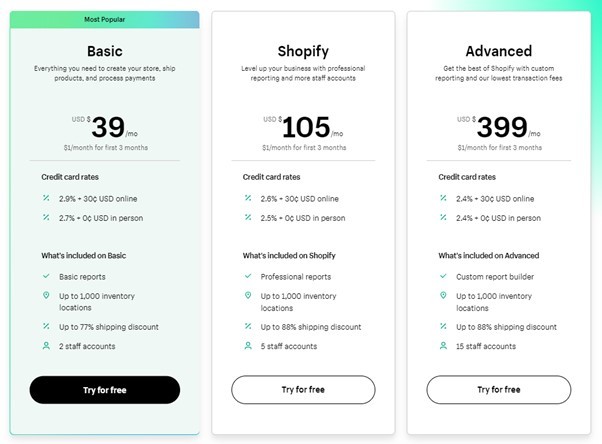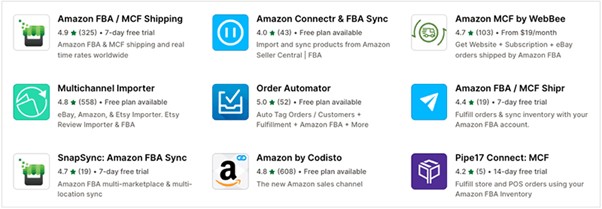- Which is better for an online store: Amazon vs Shopify
- Design
- Payment methods
- Dropshipping
- Helpdesk
- Which platform is better for promotion, Amazon or Shopify?
- SEO promotion
- Content Marketing
- Amazon vs Shopify cost comparison
- Amazon Usage Pricing
- Shopify Pricing Plans
- Shopify or Amazon?
- Pros and cons of Amazon
- Pros and cons of Shopify
- Can I use Amazon for eCommerce with Shopify?
Two world-famous eCommerce platforms, Shopify and Amazon, offer entrepreneurs different approaches to growing their online business. In this article, we will conduct an objective and comprehensive analysis of the two sites, allowing you to make an informed choice between them and decide for yourself which is better, Shopify or Amazon, in an ever-changing market and growing competition.
Which is better for an online store: Amazon vs Shopify
When choosing a CMS for trading on the Internet, it is important to consider before the start of sales what payment gateways the system supports, what commissions will need to be paid, whether it is possible to uniqueize the design of the store, etc. After analyzing all these factors, you can understand which is better for ecommerce, Amazon or Shopify.
Design
With Shopify, you can choose from dozens of free and hundreds of paid themes, each of which can be customized and customized to your needs.
How many calls and sales will I get by ordering contextual advertising from you?
I need to calculate the conversion of my website Describe
the task
in the application
Calculate potential ad revenue Google
contextual advertising calculator
Using an intuitive interface, you can easily change the color of the template elements, fonts, images and store structure without the need for special programming knowledge.
But on Amazon, only basic standard templates are available to the user, which are almost impossible to edit. It is very easy to work with them, but you will not be able to make your own unique project on this site – the store will be similar to all the others on the same platform. The main focus here is on the sale of goods, and not on the uniqueness of the design.
Payment methods

Shopify has its own payment gateway, Shopify Payments. Integration with third-party payment systems is also possible – PayPal, Stripe, Apple Pay, Google Pay and others.
In total, the system supports more than 100 payment methods, which allows customers to choose the most convenient method for them. However, for the use of third-party gateways, Shopify charges a separate fee from the seller.
Amazon also has an internal service for accepting payments – Amazon Pay. It integrates with an online store and allows customers to pay for purchases using the data saved in their accounts. At the same time, support for third-party payment systems is not provided here, which may be inconvenient for some buyers.
Dropshipping
This is a popular business model that allows entrepreneurs to sell products without having to store them in a warehouse and ship them to customers themselves.
Shopify offers easy integration with multiple suppliers via dropshipping scheme. Use the handy Oberlo, Spocket or Printful apps to automate this process. Thanks to this, you can focus on marketing and sales, and not on logistics issues.

Amazon has its own Fulfillment by Amazon (FBA) program. It is intended for merchants who want to use the storage and delivery services offered by this platform.
At the same time, a number of strict restrictions must be observed in order to participate in the program. For example, the seller must ensure high quality products and fast delivery, as well as comply with all requirements for returns and order processing.
Helpdesk
Shopify is known for its excellent 24/7 customer support via phone, email or online chat. There is also an extensive knowledge base available on the site, where you will find articles and video instructions on setting up, managing and promoting your store.
Amazon support is provided through the Seller Central. Here you can send a request by email or call by phone (but only during business hours). Its own knowledge base is also present, but it is much less extensive and affects fewer aspects.
Which platform is better for promotion, Amazon or Shopify?
It depends on the right platform how efficiently and conveniently you will work on promoting your online store. Next, we will figure out which platform is better, Shopify or Amazon, suitable for implementing your marketing strategies and getting a stable profit from the project.
SEO promotion
Search engine optimization is an integral part of successful online marketing. High positions in search engines will attract more traffic to the site, and hence orders from potential customers.
In Shopify, SEO potential is fully revealed: you can prescribe meta tags for both product pages and categories, alt texts for images. All pages have a CNC URL address. It is also possible to install extensions for connecting analytics systems, micro-markup and other useful functions for internal optimization.
But Amazon is more designed for promotion within the site itself. It will be difficult for you to bring product pages to the top of Google or Bing due to the limited SEO settings.
How many calls and sales will I get by ordering contextual advertising from you?
I need to calculate the conversion of my website Describe
the task
in the application
Calculate potential ad revenue Google
contextual advertising calculator
You can optimize your headlines, write a quality product description, and work on your seller rating to rank within Amazon itself. But this site is not suitable if it is important for you to attract traffic from search engines.
Content Marketing
Content marketing is an important tool not only for strengthening the brand image, but also for attracting the target audience, as well as increasing sales. Interesting and useful articles on the company’s blog will help you win the trust of users and choose the right products.
On Shopify, you will have access to a full-fledged blog where you can upload written articles, adding videos, pictures and infographics to them. You can attach buttons for sharing in social networks to each article. Special plugins for effective email marketing are also available.
Amazon, on the other hand, is more focused on sales, so blogging opportunities are limited here. You can add descriptions for products, upload photos and videos, but nothing more. There is also no way to set up integration with external services for blogging and mailing lists.
Amazon vs Shopify cost comparison
When comparing Shopify and Amazon, one of the key factors is the price of using the site itself, as well as the need for additional costs – transaction fees, plugin costs, etc. Let’s take a look at the pricing plans of these platforms to help you decide.
Amazon Usage Pricing

Amazon offers two main pricing plans, depending on your sales volume and the number of items you add:
- Individual plan. Suitable for sellers with a small number of products. There is a $0.99 commission for each item sold. There are also additional processing and shipping fees (when using the FBA service).
- Professional plan. It is designed for sellers with a large assortment and high sales volume. The tariff includes a fixed monthly subscription fee of $39.99. There is no commission for each unit sold. All FBA surcharges also apply.
Regardless of the plan, Amazon charges customers a referral fee for being able to sell on its platform. It varies depending on the category of goods and its value. For example, for electronics it is 6-8%, and for clothes and shoes it can reach up to 45%.

Shopify Pricing Plans

Shopify also provides several tariff plans, but there is no referral fee and a direct dependence of the commission on the product category:
- Basic. Suitable for aspiring entrepreneurs with a small number of products and a limited budget. The cost of using is $39 per month, and the payment processing fee is 2.9% + 30 cents per transaction. At the same time, you can add an unlimited number of products and create 2 accounts for managers.
- Shopify. Suitable for companies with a large assortment and higher requirements for functionality. The cost is $105 per month. At the same time, the transaction fee is reduced to 2.6% + 30 cents. In this plan, you can already activate gift cards, access professional reports and create accounts for 5 employees.
- Advanced. The price for using the tariff plan is $299 per month, and the commission for accepting payments is 2.4% + 30 cents. Here you can already create advanced reports, accounts for 15 managers and connect several domains for different countries.
There is also an additional fee when using external payment gateways (PayPal, Apple Pay, Google Pay and others).
Shopify or Amazon?
In addition to the functionality of each site and the cost of using it, it is important to familiarize yourself with their main advantages and disadvantages during the selection process. After you extrapolate this data to the specifics of your business, the question of whether to choose Shopify or Amazon will be decided.
Pros and cons of Amazon
Amazon is probably the most famous dropshipping site in the world. It has a lot of advantages:
- Huge audience. The largest marketplace collects a lot of traffic from different sources, which provides sellers with access to millions of potential customers.
- Easy start. The process of registering and managing goods is extremely simple, even a beginner in business can start selling on Amazon.
- FBA services. No need to maintain your warehouse – use FBA for storage, packaging and delivery, so you can focus on growing and scaling your business.
- Internal advertising. Amazon Ads allows you to increase the visibility of product pages and increase the number of orders without connecting external tools.
True, there are tangible disadvantages that need to be taken into account:
- Competition. Due to the large number of competitors, you need to work on the reputation of the brand and try to attract the audience with individual offers.
- Commission. It is quite high, but depends on the category of goods that you are promoting. Also, do not forget about the monthly fee for using the platform. Switching to a professional tariff is beneficial if you send more than 40 orders per month.
- Design. It will not work to unique the appearance of your online store. It will look a lot like everyone else on Amazon.
- Platform dependent. Any changes in policies and regulations can have a significant impact on your business. For example, referral fees are constantly changing upwards.
Pros and cons of Shopify
Shopify is a more versatile CMS that is suitable for an eCommerce project in a wide range of topics. It has the following advantages:
- Individual design. Due to the large number of ready-made templates, as well as the possibilities for customizing them, your store will look unique. By connecting Google Analytics to your site, you can study the behavior of visitors and refine usability so as to get the maximum conversion.
- Simple interface. Even a novice administrator will be able to deal with management. No special code knowledge or extensive experience is required.
- Possibility for integration. You can connect an online store with delivery services, dropshipping services, and even Amazon.
- A wide range of applications. In the Shopify App Store, you can download plugins for every taste, which will significantly expand the functionality of your resource.
You also need to take into account the disadvantages of Shopify:
- Additional costs. Most extensions are paid. Some require you to deposit funds every month, which can significantly affect the overall cost of using the platform.
- Commissions for using third-party payment systems. If you accept payments through a third party provider, you will have to budget for an additional fee.
- Marketing expenses. If Amazon has its own huge audience, part of which will see your offer without additional actions on your part, then there will be no traffic on Shopify until you invest in SEO promotion or contextual advertising.
- Delivery and storage of products. If you can provide storage, packaging and shipping services with Amazon, then Shopify will have to organize these processes on its own or cooperate with third-party logistics companies.
Can I use Amazon for eCommerce with Shopify?

You can leverage the strengths of both platforms to reach your target audience. To set up the integration, you need to create an Amazon professional seller account and install the official Amazon Sales Channel app in your Shopify store.
This will allow you to:
- Synchronize leftovers. Thus, it is much easier to manage inventory in the warehouse and not sell the same item twice on different sites.
- Manage orders centrally. Orders from Amazon will automatically go to your Shopify account, which simplifies the process of processing and sending.
- Edit prices and descriptions from one place. When changing the price or characteristics of a product, you do not need to change them twice in different places, this can be done centrally from one admin panel.


















